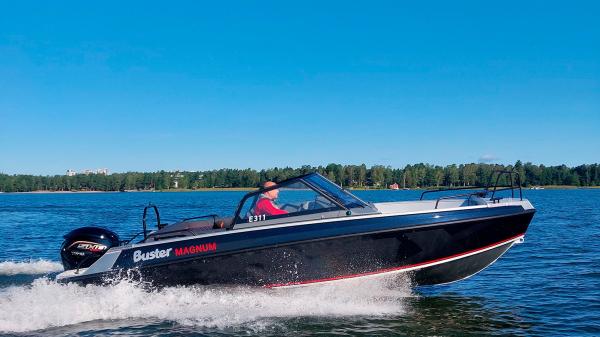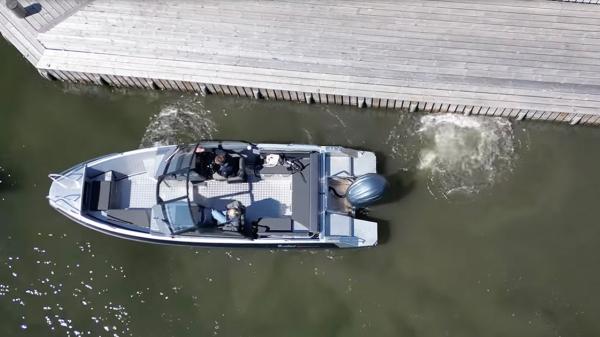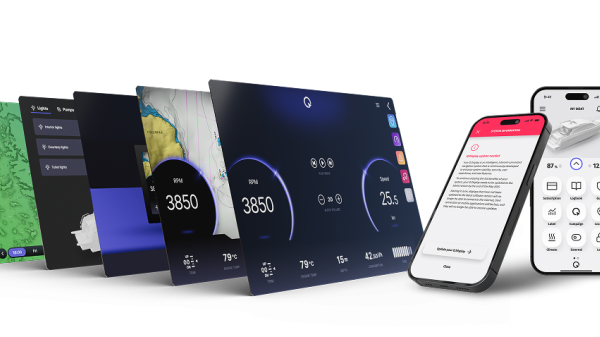17.6.2022
Buster’s tips for saving fuel when boating
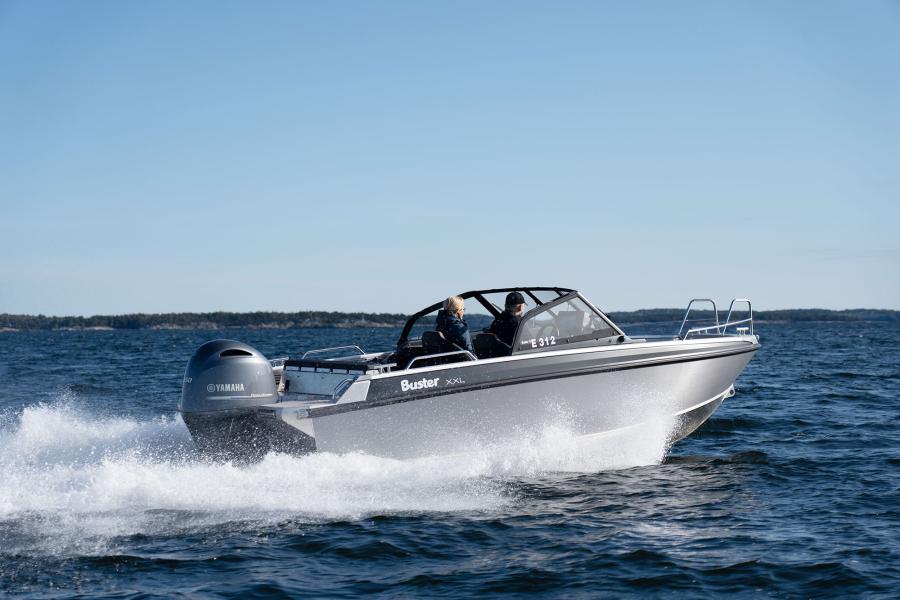
Fuel economy is an important consideration in the design of Buster aluminium boats. The most decisive factor, however, is the skipper, as different driving styles affect the fuel consumption of boats even more drastically than in cars.
“A careless skipper can easily double the boat’s fuel consumption over the same distance. After driving styles, one of the most important factors affecting fuel consumption is how clean the hull is,” says Johan Finnberg, Marketing Manager at Buster.
The fuel economy of boats is usually measured by litres per nautical mile. It is typical of a boat with a planing hull that as the planing threshold approaches, fuel consumption increases quite sharply and falls again when the most economical speed range of the hull-engine combination is reached.
Optimise trim settings
In addition to cruising at the most economical speed, it is also important to optimise the trim on boats with outboard motors. Trimming the boat by adjusting the angle between the outboard and transom shortens the waterline by raising the bow above the water.
“Boats are more efficient when they do not plough through the water. Raising the bow shortens the waterline and minimises the area in contact with the water,” explains Kalle Kanerva, Manager, New Product Development.
Boat designer Aleksi Juusti encourages boaters to test different trim settings.
“The difference can be huge when driving in different trims at half throttle, for example. The optimal trim can be found easily just by trying different settings. The trim should also be adjusted regularly while driving according to changes in the load and weather conditions, especially waves,” Juusti advises.
Once the boat is in motion, the trim should be slowly increased until the engine noise begins to change and the speed increases. At the same time, the amount of throttle can be reduced. When the optimal trim level is exceeded, the engine noise will increase and the boat will begin to slow down, even while the engine speed increases. This is a sign that the outboard is too high and that the propeller is out of the water.
“By experimenting with different trim levels, it is easy to discover when the boat is moving as lightly and efficiently as possible. This can also be confirmed by monitoring the boat’s fuel consumption,” Kanerva adds.
Select the most economical cruising speed
The most economical cruising speed in terms of fuel consumption is different for each combination of hull, outboard and propeller. For example, the optimal speed for a Buster Lx powered by a Yamaha F60 outboard and carrying two people is between 15 and 23 knots, at which speeds the fuel consumption is kept to just 0.5 litres per nautical mile.*
“The most economical speeds also maximise the thrill of speed and the joy of boating, even if you are mainly thinking about fuel efficiency,” Finnberg says.
According to Yamaha’s own tests, the fuel consumption of a Buster Lx carrying two passengers can be reduced to just 0.4 litres per nautical mile with the optimal trim settings and a clean hull. At its top speed of 30 knots, fuel consumption increases to 0.7 litres per nautical mile – almost double compared to an optimal cruising speed of around 20 knots.
The average boater typically uses their boat just 30 to 40 hours a year. At its most efficient cruising speed, the Buxter Lx consumes approximately 8 litres per hour. This equates to around 200 litres of fuel per year, considering that a significant portion of time is spent at very low speeds entering and departing the harbour, fishing and navigating shallow waters, for example, during which fuel consumption is only 1 to 2 litres per hour.
Even Buster’s biggest boat models, such as the Buster XXL and Magnum, can achieve fuel economy of around 1 litre per nautical mile at cruising speeds of 20 to 30 knots. As with smaller boat models, fuel consumption is 1.5 to 2 times higher at top speed.
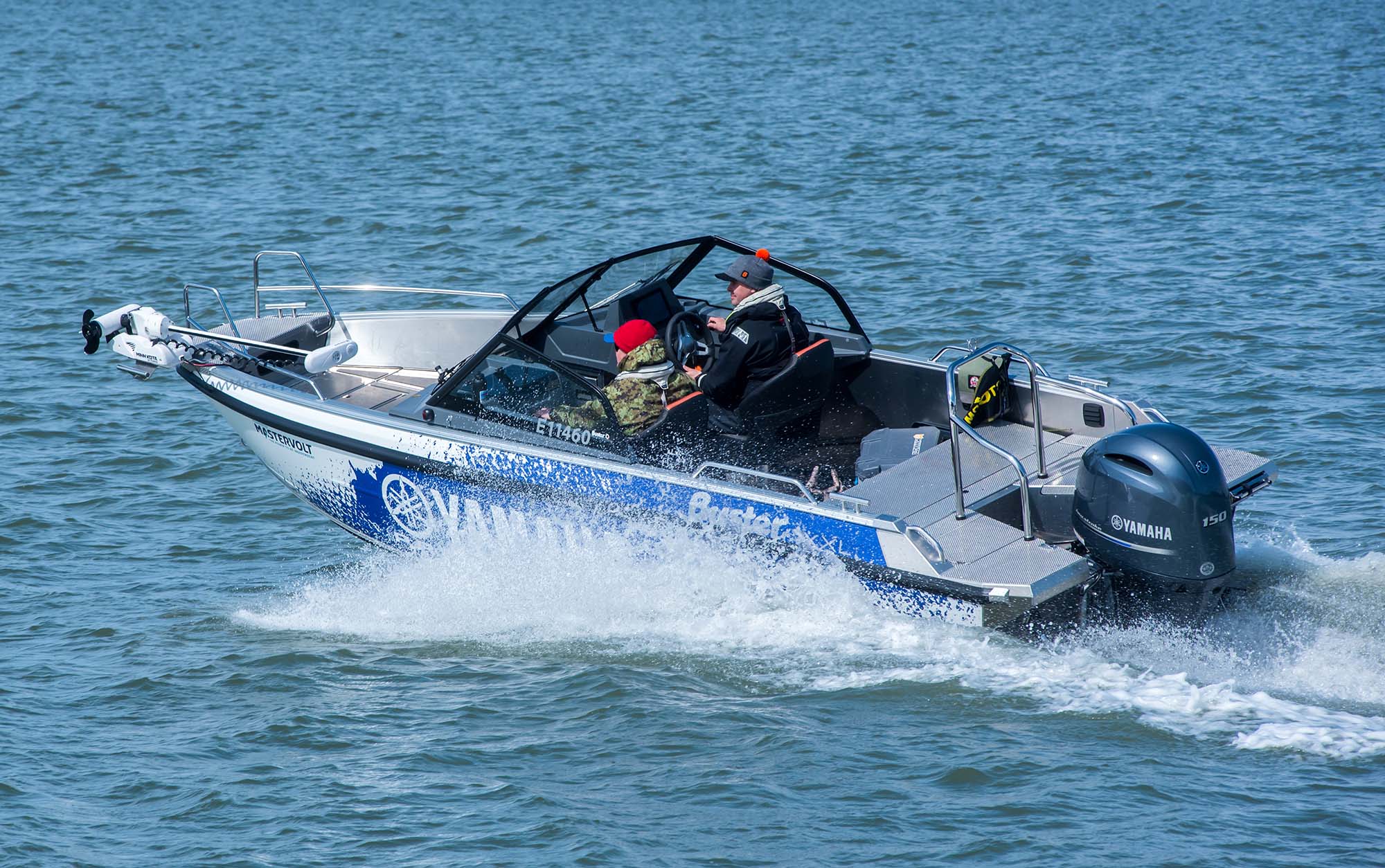
According to Jani Ollikainen, a professional fishing guide in the Finnish archipelago, he regularly achieves even better fuel economy with his own Buster XXL. Equipped with the fishing pack and a Yamaha F150 outboard, his Buster XXL gets 0.5 to 0.6 litres per nautical mile
“If I keep my cruising speed to between 21 and 26 knots, the fuel consumption of the XXL is extremely low. By being precise with the throttle, I can save 20 to 25 litres of fuel on each fishing trip. This adds up to a lot during a typical summer for a fishing guide like myself,” Ollikainen says.
The fuel economy of smaller and lighter boat models is less sensitive to speeds. For example, Buster S and Buster M models can achieve a fuel economy of 0.4 to 0.5 litres per nautical mile across a broad speed range. Of course, even with these smaller models, it is not efficient to drive with the bow high in the air around the planing threshold speed; for example, a Buster S with a Yamaha F30 outboard and two passengers consumes as much as 0.8 litres at a low and uneconomical speed of 6 knots. Once the speed is increased to 17 to 23 knots, fuel consumption drops to just half the amount.
Buster’s guidelines for saving fuel when boating
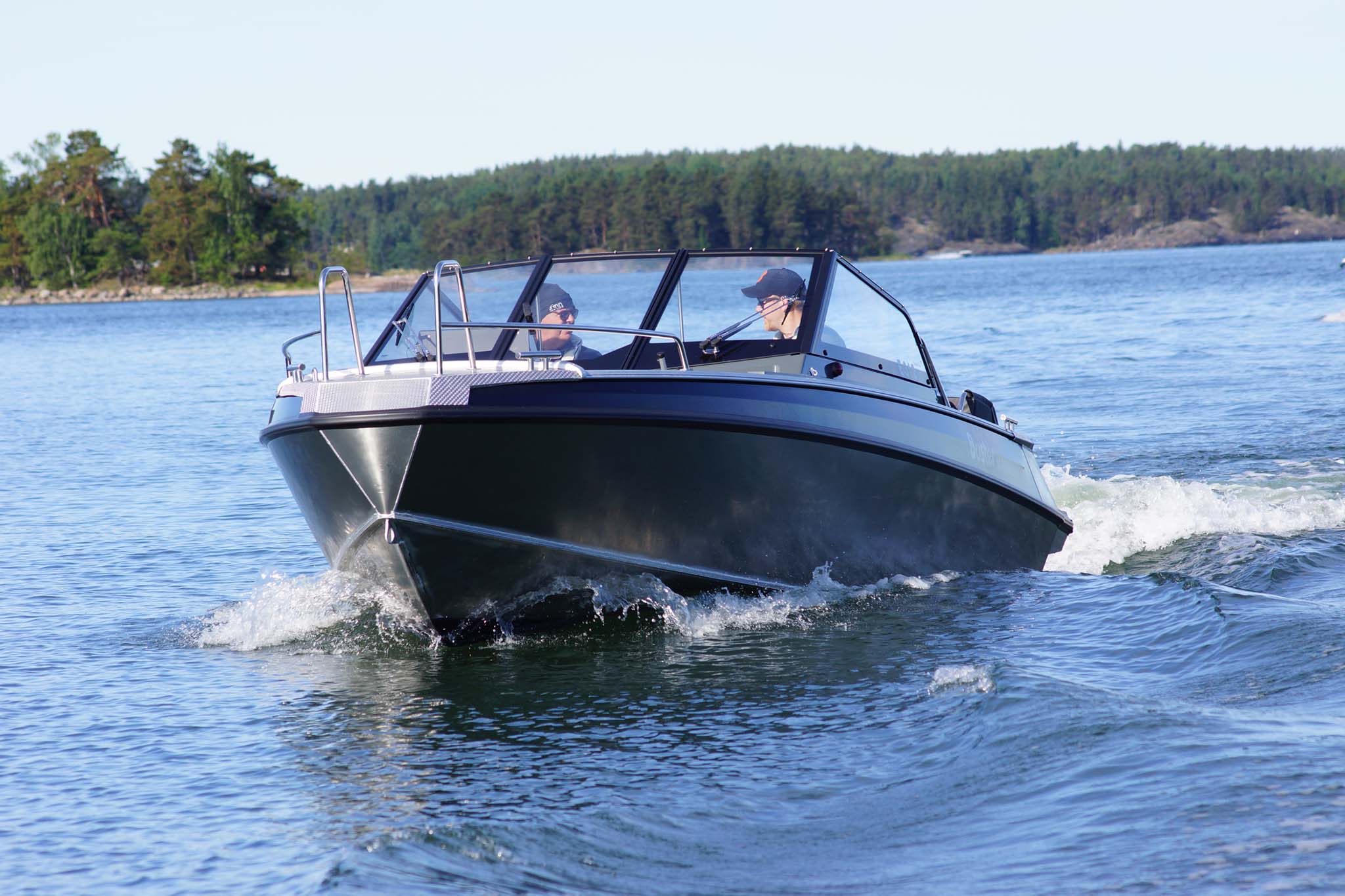
- Cruise within the most economical speed range of your boat. You can monitor fuel consumption for each trip from the instrument panel or the Buster Q smart display, on which you can select litres per hour, litres per kilometre or litres per nautical mile.
- Avoid driving with the bow high in the air around the planing threshold. Fuel consumption actually decreases if you increase your speed to the economical cruising range.
- Optimise your trim settings so the boat cruises lightly and does not plough through the water.
- Keep the hull of your boat clean. A dirty hull will significantly increase fuel consumption.
Trimming boats with outboard motors
- As you increase your speed, keep the trim and bow as low as possible without ploughing.
- Once the boat is on plane, slowly increase the trim until the engine noise begins to change and the speed increases. At the same time, reduce the amount of throttle.
- When the trim level is exceeded, the engine noise will increase and the boat will begin to slow down, even while the engine speed increases. This is a sign that the propeller is too high and loses grip. In some situations, too much trim can make the bow of the boat bob up and down by itself (porpoising).
- When driving against the waves, lower the bow to soften the ride.
- When driving with the waves or against very high waves, raise the bow slightly to avoid it diving.
Economical speed ranges
(Source: Yamaha Körfakta)
- Buster S with Yamaha F25: 13–24 knots
- Buster S1 with Yamaha F30: 13–24 knots
- Buster M1 with Yamaha F30: 11–22 knots
- Buster M2 with Yamaha F40: 15–22 knots
- Buster L with Yamaha F50: 18–25 knots
- Buster L with Yamaha F60: 15–25 knots
- Buster X with Yamaha F70: 18–28 knots
- Buster XL with Yamaha F115: 13–26 knots
- Buster XXL with Yamaha F150: 15–30 knots
- Buster Magnum with Yamaha F225: 22–28 knots
- Buster SuperMagnum with Yamaha F300: 17–30 knots
* Measured speeds and consumption data are indicative and achieved under test conditions. Consumption can vary significantly due to waves, wind, the type of propeller, the height of the motor, the trim angle, trim levels, the cleanliness of the hull, the fuel level and the load in the boat.
